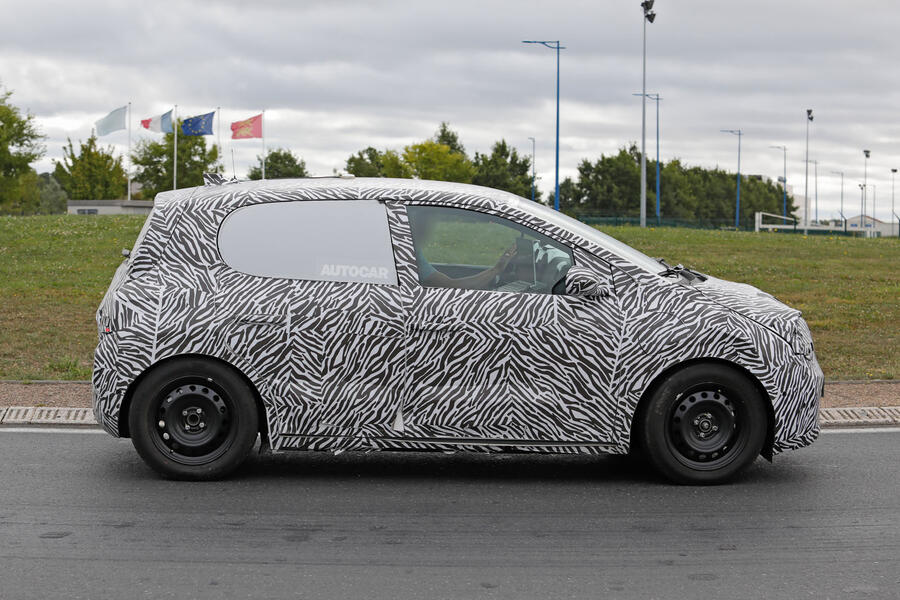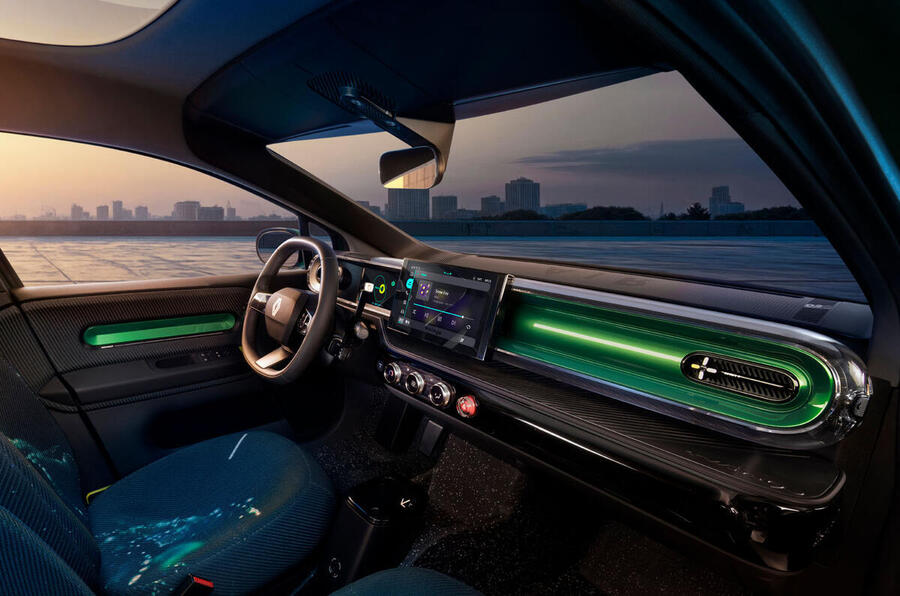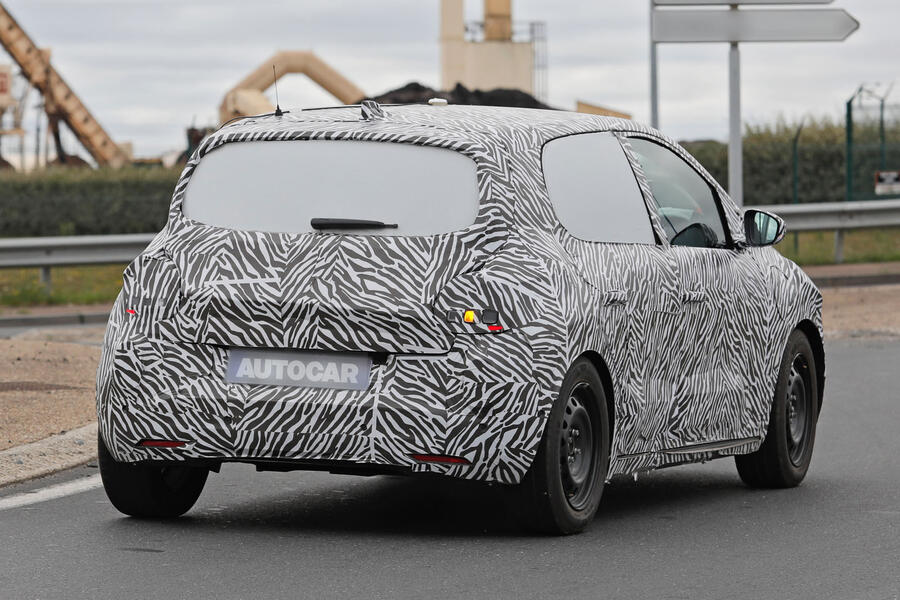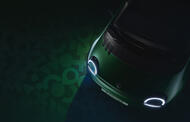The fourth-generation Renault Twingo E-Tech will be revealed on 6 November – and UK buyers will be able to order models from mid-October.
The new, sub-£17,000 entry point to Renault’s expanding EV line-up will hit the roads in 2026 as a direct rival to the upcoming Volkswagen ID 1. It will be positioned beneath the Renault 5 and Renault 4 in the brand's growing line-up of small EVs and has been developed in less than two years.
The French firm has confirmed that a launch event for the Twingo will be held early next month and issued four new official preview images. These confirm that the styling will remain close to the original concept car.
As with the 5 and 4, Renault will offer a Twingo R-Pass, which is described as a 'skip-the-line' early reservation programme. It will be launched in the UK on 15 October and will give those who sign up early access to orders when the Twingo goes on sale. R-Pass members will be given priority in both production and delivery of the vehicle, along with other unspecified 'exclusive benefits'.
Spied testing recently by Autocar spy photographers, the new city car is being launched seven years after its petrol predecessor was withdrawn from sale in the UK due to declining demand (just 877 UK sales in 2018).
A key selling point for the Twingo will be its sub-£17,000 starting price, which is part of a brief to create a “fit-for-purpose urban vehicle with no compromiseâ€.Â
Notably, this undercuts the old Twingo Electric’s starting price of €21,350 (£18,624) in 2021. This variant was introduced during the model’s third generation but never sold in the UK.
Its pricing will position it just above the £14,995 Dacia Spring and £15,995 Leapmotor T03 – the two cheapest electric cars on sale in the UK today – in a growing A-segment that will later be supplemented by the ID 1, Kia EV1 and a Nissan-badged variant of the Twingo.
Renault will look to distinguish the Twingo from its rivals with a funky design – and our first sight of test mules confirms that the production car doesn’t differ too much from the radical concept of 2024, which was inspired by the Mk1 Twingo of 1992.Â

The car’s look retains a similar bubble-like shape to the concept’s, while under the camouflage, it features the same semicircular light design at the front and rear.
However, some elements have been made more conventional, such as grab handles replacing the concept’s Mk1-inspired integrated pulls. The test mules also have more ground clearance than the low-slung concept.
It’s not clear if it will keep the concept’s unique battery percentage display on the bonnet, made up of three vent-like screens that reference a design detail of the Mk1, while the all-glass boot design has been made more conventional.
The interior of the production car has yet to be seen. However, it has been previewed by the concept’s “90% ready†cabin, which was clearly designed with cost-consciousness in mind – as evidenced by the basic seats and bare surfaces.
At the centre of the concept’s dashboard is a 10.1in infotainment touchscreen supplemented by physical buttons and dials for main functions and a 7.0in digital instrument cluster.Â

Like the exterior, the concept’s interior makes clear reference to the Mk1, with its ovoid air vents and surfaces and prominent red hazard light button. Renault has described the cabin as “airy, cylindrical and suspended†and “designed to make life easierâ€.
While the firm has offered no details on the powertrain, it’s understood to be closely related to that used in the larger Renault 5, which sits on the Ampr Small platform.
In the 5’s base spec, which costs £22,995, it offers 118bhp from a single motor and draws electricity from a 40kWh battery pack that enables a range of 190 miles. But in the interests of cutting costs, it could be fitted with an even smaller battery. For example, the Renault-made Dacia Spring uses a 25kWh pack to give a 140-mile range. Originally, Renault claimed the Twingo would offer impressive efficiency of 6.2mpkWh.
While a sub-£17,000 electric city car is important to Renault’s growing EV ambitions, the way it has been developed is also highly significant for the French firm. From green light to showroom, the Twingo will have taken just 21 months. For context, the current Clio took 48 months.
That drastic reduction in development time is being championed by new Renault Group CEO François Provost, who took over the post vacated by Luca de Meo at the end of July. Provost has vowed to continue cutting development times as part of “an obsession with competitivenessâ€.
The Twingo is vital to this plan, he said, because the processes used to get it to the cusp of production will be the blueprint from now on. The firm sees this approach as essential to keep pace with an increasingly competitive market, especially with car makers from China.

Production costs will also be an important factor in bringing down the Twingo’s showroom price. Provost’s predecessor claimed the hatchback will cost 50% less to produce than a new C-segment SUV, due to a reduction in materials and the increased focus on a software-driven platform that requires fewer parts and materials.Â
Key to this will be the work done by Ampere, which was launched last year as a stand-alone, Europe-based company within the Renault Group. Ampere’s focus is to achieve price parity between EVs and ICE vehicles by, among other things, reducing variable costs in Renault’s production processes.
Another key facet of the Twingo is its carbon footprint. Renault claims the electric city car will produce 75%-lower CO2 emissions over its life cycle than the “average European ICE car sold in 2023â€.
The Twingo’s arrival in the UK next year follows a period of uncertainty over whether there would be a right-hand-drive version. (The Mk1 was LHD only; the first RHD Twingo was the Mk2 of 2007.) Originally, Renault held back on confirming that it would be sold in the UK, given the costs of converting it to RHD. But the strong reception of the 5 pushed brand boss Fabrice Cambolive to give it the green light.
“The UK is very important in terms of product recognition, because your legacy in terms of cars is very important,†he told Autocar previously. “I’ve followed closely the reaction to the R5 and R4 [in the UK], and with Twingo the exercise will be even more interesting. The Twingo can be one of the solutions of mobility for the UK tomorrow.â€


